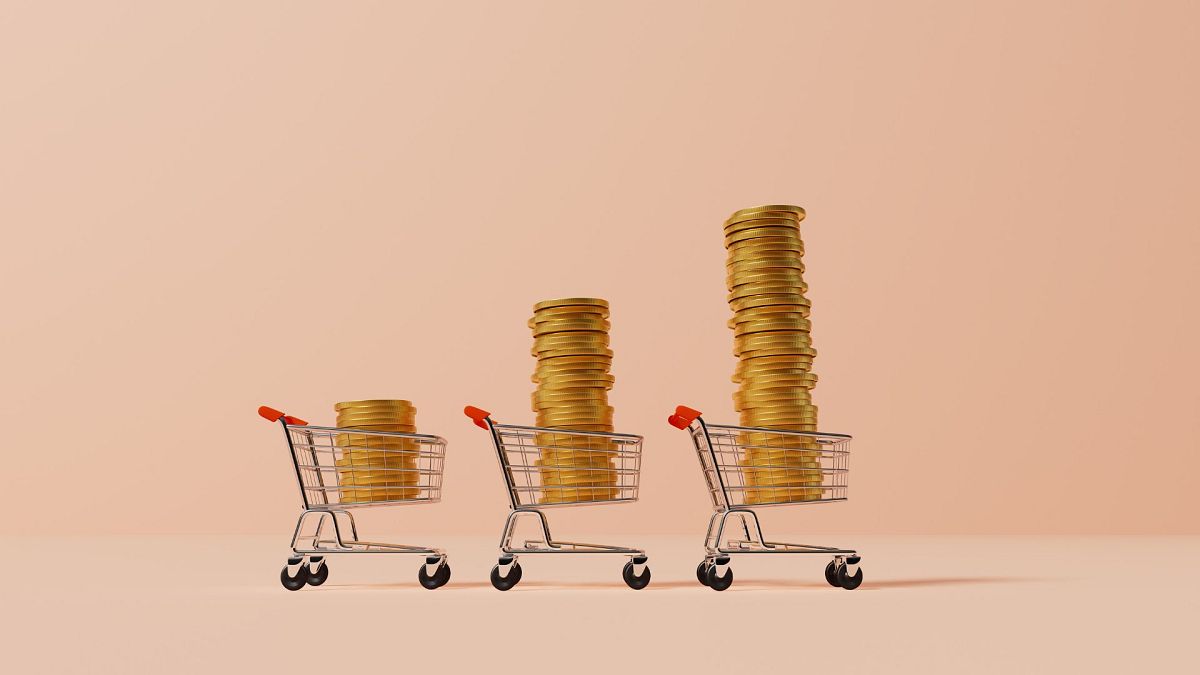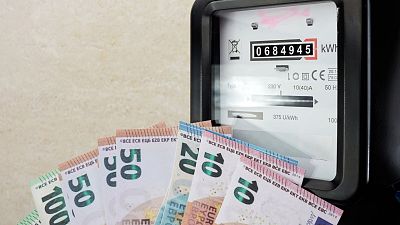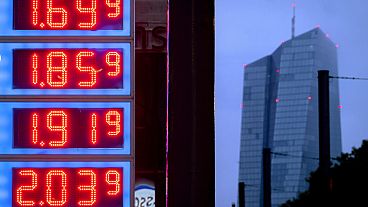Annual inflation in the EU has been declining whilst food inflation remains high, hitting low-income families across Europe.
Inflation in the euro area has slowed down since its peak of 10.6% (11.5% in the EU) in October 2022 to 2.9% (3.6% in the EU) in October of this year.
However, food inflation remains stubbornly high as consumers continue to grapple with the cost of living crisis.
For example, real food inflation, which is the rate of food inflation minus overall inflation, was 4.6% in the euro area (4% in the EU) in October 2023, putting huge pressure on low-income households.
In 2022, inflation rates soared in the EU, reaching levels not seen in the previous four decades. Between 1997 and late 2021, the highest annual inflation rate the bloc saw was 4.4%, as recorded in July 2008.
The annual food and non-alcoholic beverage inflation rate also followed a similar trend, reaching a 19.2% peak in March 2023.
However, the gap between the rate of inflation overall, and that of food and non-alcoholic beverages, has never been so large as it has in the past 12 months.
Since 1997, the first year of available Eurostat data, the real food inflation rate (including non-alcoholic beverages) had not exceeded 3.5% in the EU until mid-2022. Reaching 3.9% in August 2022, it peaked at 10.9% in March 2023.
Food inflation exceeded overall inflation in 9 out of 10 countries
In October 2023, the annual food and non-alcoholic beverages inflation exceeded overall inflation in 33 out of 37 countries in Europe.
The annual real food inflation rate ranged from –5.7% in Czechia to 10.9% in Belgium, among EU countries. Belgium was followed by the Netherlands (8.8%), Greece (6.6%) and Spain (5.9%).
After Czechia, Hungary (-1.6%), and Romania (-0.5%) had the lowest real food inflation rates in the EU.
Looking at the Big Four - the four most populated EU countries - the real food inflation rate was below the EU average in Germany (3.7%) and France (3.5%), yet above that in Spain (5.9%) and Italy (4.9%).
When the European Free Trade Area (EFTA), the UK and EU candidate countries are included, Turkey (11.0%) recorded the highest real food inflation rate.
As seen in the map below, the real food inflation figures do not suggest a strong divide between the different regions of Europe, such as the western, Nordic, southern and eastern states.
Looking at just rate of food and non-alcoholic beverages inflation in the EU, the figures varied from 3.7% in Denmark to 10.4% in Greece in October 2023. The EU average was 7.6%. It marked the first single-digit rate since May 2022.
The annual food inflation rate was above 7.5% in 14 EU member states, including Greece, Belgium, Spain and France.
Turkey, a candidate country, was an outlier in food inflation with 72.5%.
What are the drivers of food inflation?
According to a document prepared for MEPs, the main drivers of food inflation have been rising energy costs, affecting the entire agri-food chain, from farmers to processing facilities to transport.
Moreover, a reduced supply of key agricultural inputs, such as fertilisers and animal feed, constitute the highest input costs for farmers.
Disruptions from the war in Ukraine
According to the World Bank’s Food Security update, dated 9 November 2023, European countries are listed among the most-affected regions.
“Many countries have experienced double-digit food price inflation, with regions such as Europe and Central Asia being particularly affected because of disruptions from the war in Ukraine,” the report underlined.
Ukraine is one of the world's leading food producers and exporters.
The countries hit hardest by rising food costs
Households have different consumption patterns depending on their income levels, cultural habits, and geographical location.
These patterns are measured by household consumption expenditure, which is what people spend on goods and services to satisfy their needs and wants.
It refers to any spending done by a person living alone or by a group of people living together in shared accommodation and with common domestic expenses.
In 2021, 14.3% of the total expenditure was devoted to food and non-alcoholic beverages in the EU.
In 2022, 25.2% of the household consumption expenditure was spent on food, including non-alcoholic beverages in Romania, followed by Lithuania (20.4 %), Bulgaria (20.1 %) and Estonia (19.9 %).
The lowest shares in the EU were found in Ireland (8.3 %), Luxembourg (9.0 %) and Austria (10.9 %).
Share of spending on food higher in candidate countries
When the EU candidate countries are included, they recorded the highest shares of spending on food, with 43.6% in Albania, 32.2% in Bosnia and Herzegovina, 30.6% in North Macedonia and 27.2% in Montenegro.
Real food inflation is crucial in these countries where the share of household spending on food is higher. Low-income households are struggling to cope with the resulting cost-of-living crisis.



